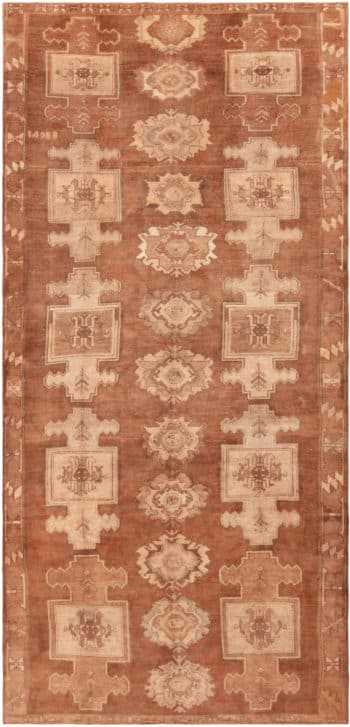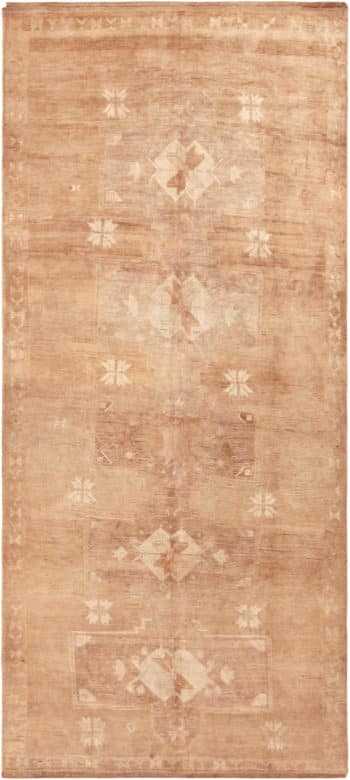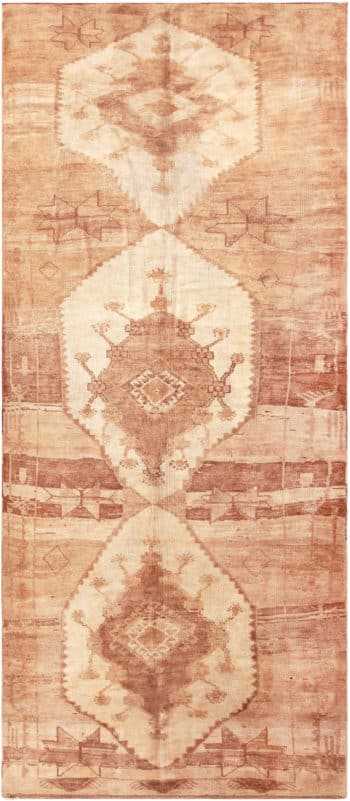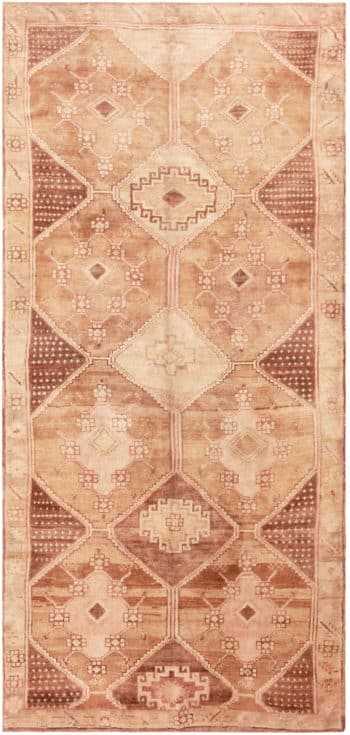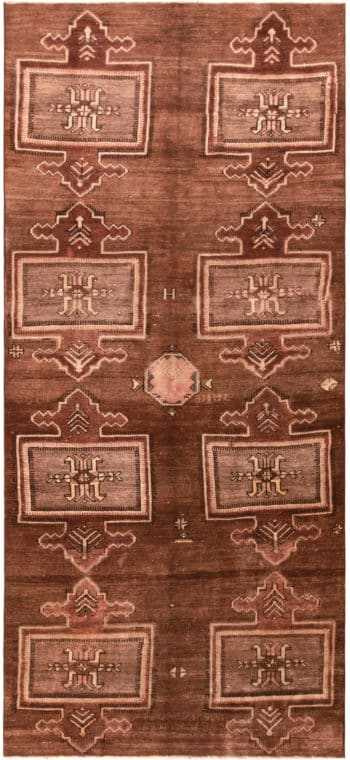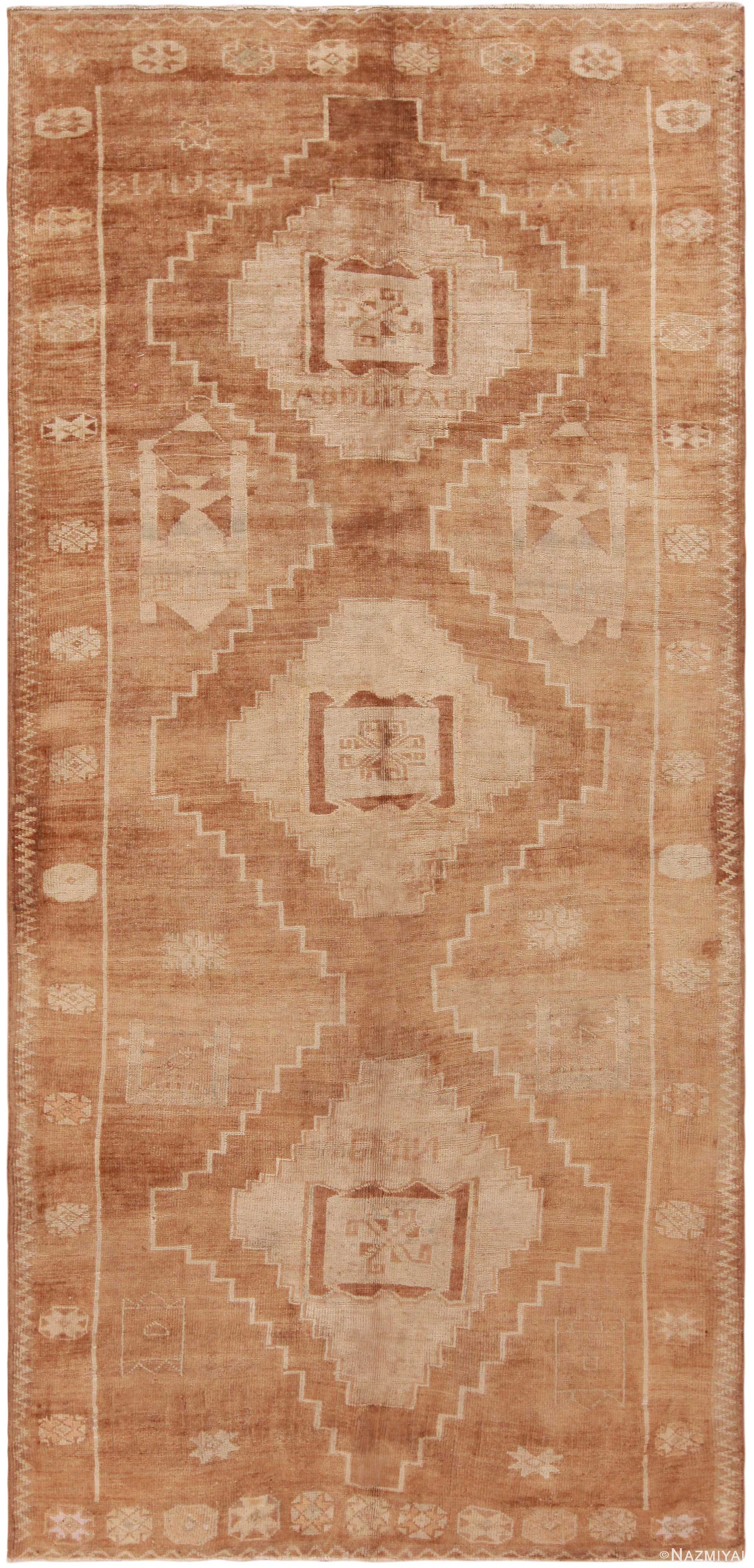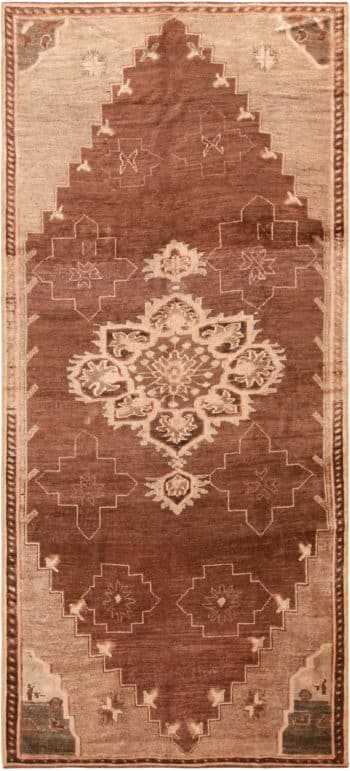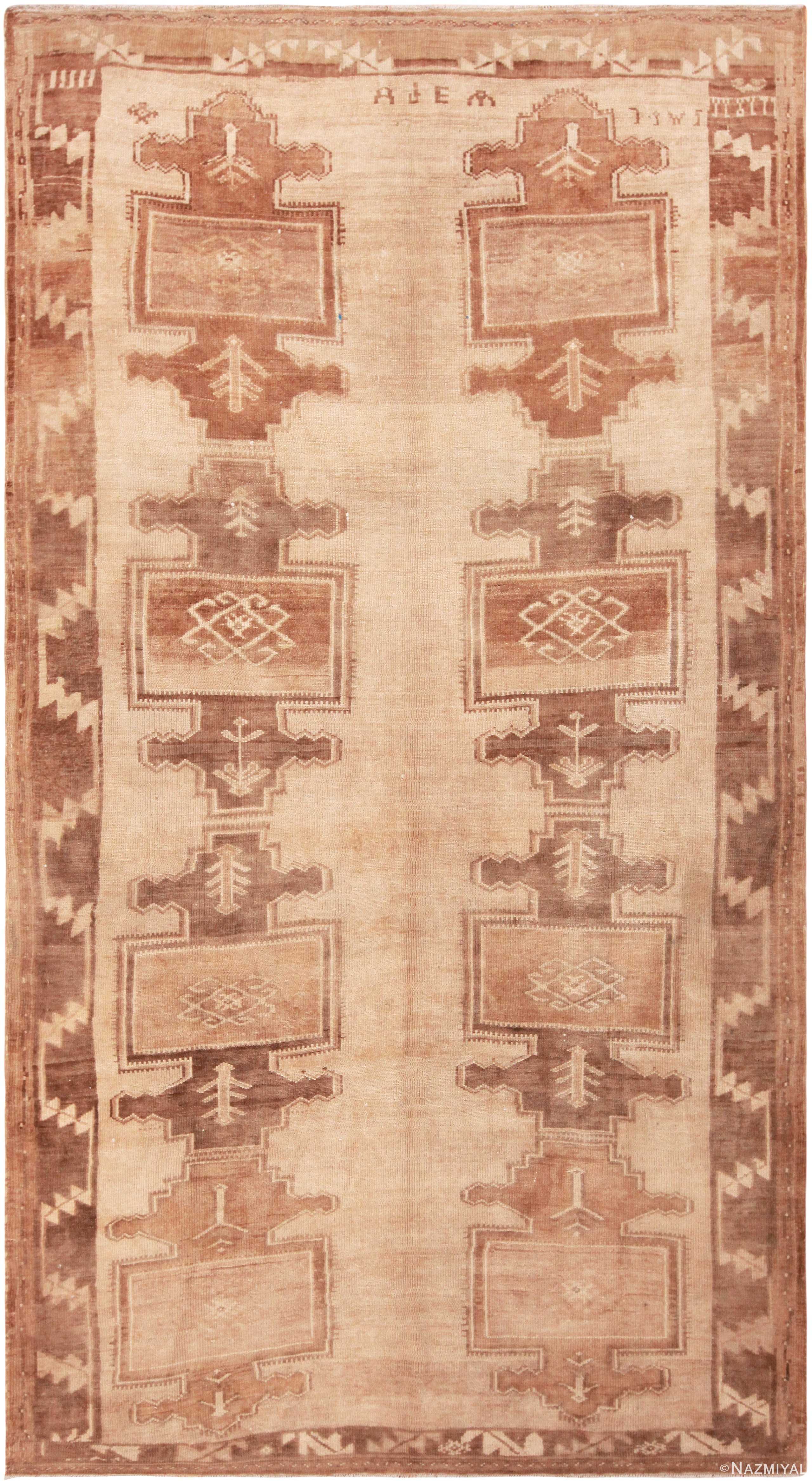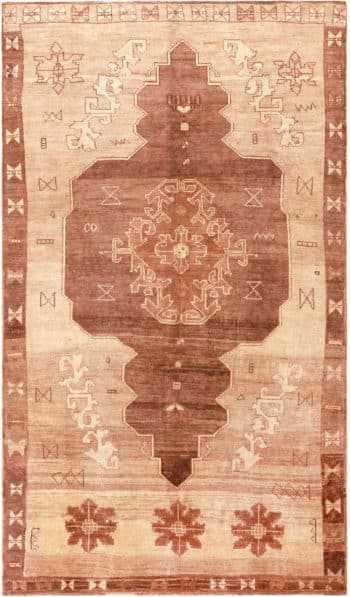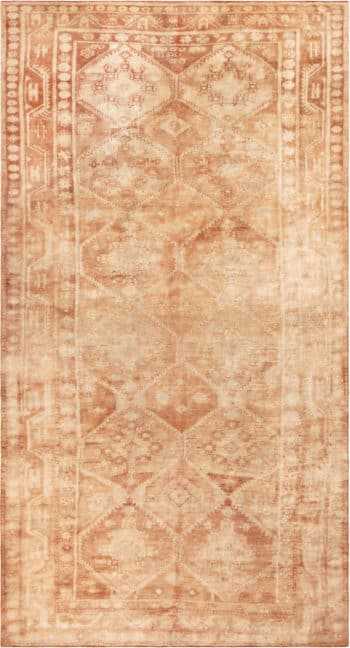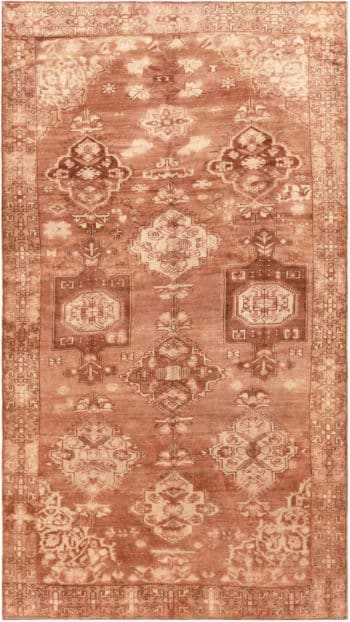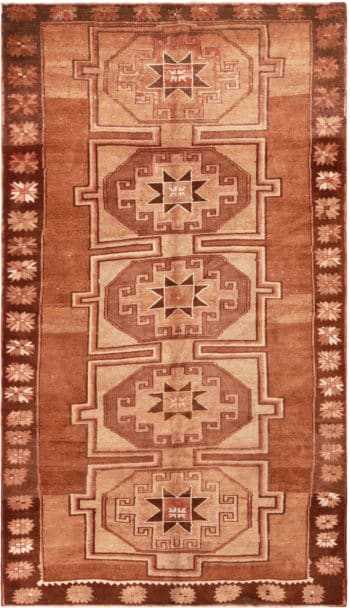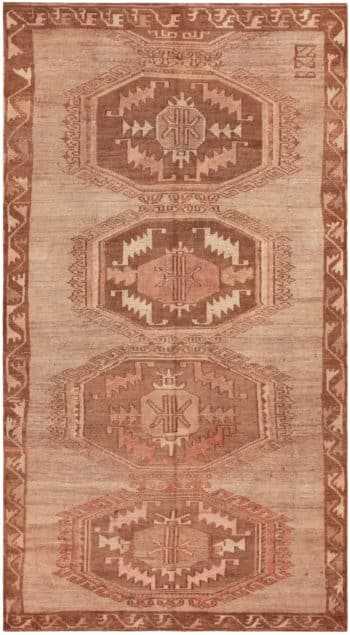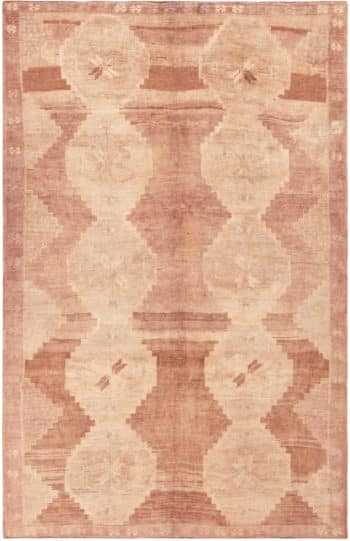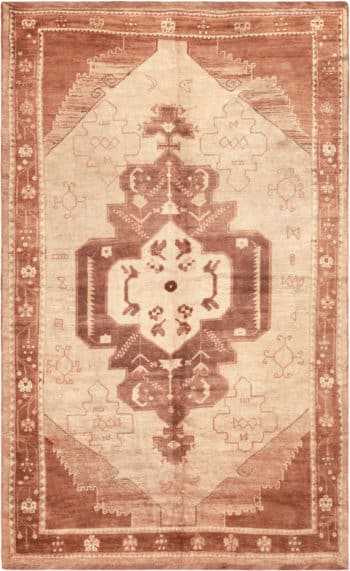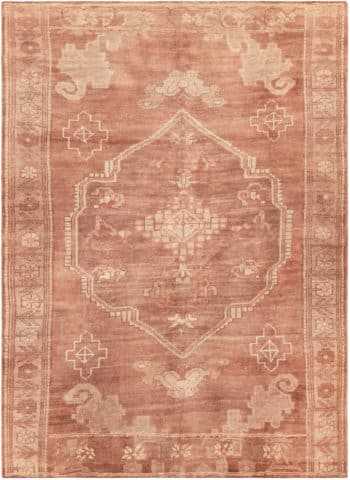Kars Rugs
Shop Our Current Selection Of Turkish Kars Rugs
Nomadic Design Signed Vintage Turkish Kars Gallery Size Rug 72293
$5,000.00Size: 5 ft 3 in x 17 ft (1.6 m x 5.18 m)Bold Primitive Design Vintage Turkish Kars Gallery Size Signed Rug 72286
$5,000.00Size: 6 ft 6 in x 16 ft (1.98 m x 4.88 m)Brown Geometric Vintage Turkish Kars Gallery Size Rug 72278
$5,000.00Size: 7 ft 6 in x 15 ft 6 in (2.29 m x 4.72 m)Gallery Size Vintage Turkish Kars Rug 72298
$5,000.00Size: 6 ft 6 in x 15 ft 3 in (1.98 m x 4.65 m)Tribal Long And Narrow Vintage Kars Rug From Turkey 72280
$5,000.00Size: 6 ft 3 in x 14 ft 10 in (1.9 m x 4.52 m)Long and Narrow Oriental Design Vintage Kars Carpet from Turkey 72289
$5,000.00Size: 7 ft x 13 ft 9 in (2.13 m x 4.19 m)Gallery Size Primitive Geometric Vintage Turkish Kars Rug 72279
$5,000.00Size: 5 ft 2 in x 13 ft 6 in (1.57 m x 4.11 m)Long And Narrow Geometric Turkish Kars Vintage Rug 72291
$5,000.00Size: 6 ft 2 in x 13 ft 5 in (1.88 m x 4.09 m)Primitive Oriental Essence Vintage Turkish Kars Geometric Rug 72287
$5,000.00Size: 6 ft x 13 ft 3 in (1.83 m x 4.04 m)Long And Narrow Geometric Caucasian Style Turkish Kars Vintage Rug 72295
$5,000.00Size: 6 ft x 13 ft (1.83 m x 3.96 m)Oriental Design Brown Vintage Turkish Kars Rug 72302
$5,000.00Size: 5 ft 10 in x 12 ft 10 in (1.78 m x 3.91 m)Room Size Earthy Tones Geometric Vintage Kars Rug From Turkey 72294
$5,000.00Size: 7 ft x 12 ft 10 in (2.13 m x 3.91 m)Geometric Decorative Tribal Vintage Turkish Kars Rug 72299
$5,000.00Size: 6 ft 1 in x 12 ft 9 in (1.85 m x 3.89 m)Room Size Geometric Oriental Design Tribal Turkish Kars Vintage Rug 72292
$5,000.00Size: 7 ft x 12 ft (2.13 m x 3.66 m)Geometric Oriental Design Vintage Turkish Kars Room Size Rug 72281
$4,800.00Size: 6 ft 8 in x 12 ft (2.03 m x 3.66 m)Brown Tones Primitive Oriental Vintage Kars Rug from Turkey 72283
$4,800.00Size: 6 ft 8 in x 11 ft 3 in (2.03 m x 3.43 m)Eight-Pointed Star Vintage Kars Rug From Turkey 72301
$4,800.00Size: 6 ft 6 in x 11 ft (1.98 m x 3.35 m)Brown Caucasian Design Vintage Turkish Kars Rug 72282
$5,750.00Size: 5 ft 10 in x 11 ft (1.78 m x 3.35 m)Nomadic Design Vintage Turkish Kars Area Rug 72300
$4,800.00Size: 6 ft 8 in x 10 ft 6 in (2.03 m x 3.2 m)Room Size Decorative Vintage Turkish Kars Area Rug 72284
$4,800.00Size: 6 ft 7 in x 10 ft 4 in (2.01 m x 3.15 m)Oriental Design Geometric Vintage Turkish Kars Rug 72296
$4,900.00Size: 6 ft x 9 ft 9 in (1.83 m x 2.97 m)Vintage Turkish Kars Geometric Medallion Rug 72297
$4,800.00Size: 6 ft 4 in x 9 ft (1.93 m x 2.74 m)
Learn More About The Turkish Kars Area Rugs
Turkish Kars rugs have a rich history and continue to be highly valued for their artistry and cultural significance. They are sought after by collectors and enthusiasts worldwide, serving as beautiful examples of the enduring craft of carpet weaving in Turkey.
Turkish Kars rugs, also known as Kars carpets or Kars kilims, have a rich history that dates back several centuries. They are named after the city of Kars, located in northeastern Turkey, which has been a prominent center for carpet weaving. Here is a brief history of the production and weaving of Turkish Kars rugs:
The art of carpet weaving has ancient roots in the region, with influences from various cultures and civilizations that have passed through Anatolia over the centuries. Kars, situated on the historical Silk Road, was exposed to different artistic traditions, including Persian, Caucasian, and Anatolian weaving techniques. These influences played a significant role in shaping the distinctive style of Kars rugs.
During the 16th to 18th centuries, Kars became renowned for its carpet production. The city attracted skilled weavers who crafted high-quality carpets featuring intricate designs and vibrant colors. Kars carpets from this period often incorporated geometric patterns, floral motifs, and intricate borders.
In the 19th century, Kars came under Russian control during the Russo-Turkish War of 1877-1878. The Russian influence had a significant impact on the design and production of Kars rugs. Russian buyers and merchants demanded specific patterns and colors, leading to a shift in the style of Kars carpets to cater to the Russian market.
Turkish Kars rugs are traditionally hand woven using the symmetrical knotting technique, known as the Gördes knot or Turkish knot. The rugs are crafted using high-quality wool sourced from local sheep. The wool is spun, dyed with natural dyes, and then woven into intricate patterns on a loom. The use of natural dyes contributes to the rugs’ unique and rich colors.
Kars rugs are known for their diverse range of designs, often characterized by geometric shapes, medallions, stylized motifs, and repeating patterns. They typically feature a central medallion surrounded by elaborate borders. The colors used in Kars rugs can vary, but they often include vibrant reds, blues, greens, and earth tones. These rugs are renowned for their durability, density, and intricate craftsmanship.
Turkish Kars rugs have a rich history and continue to be highly valued for their artistry and cultural significance. They are sought after by collectors and enthusiasts worldwide, serving as beautiful examples of the enduring craft of carpet weaving in Turkey.
What makes Turkish Kars rugs so special?
Turkish Kars rugs are renowned for their exceptional quality, unique designs, and historical significance. They are produced in the city of Kars, located in northeastern Turkey, which has a rich tradition of rug weaving.
Several factors contribute to the special nature of Turkish Kars rugs:
- Historical Legacy: Kars has a long history of rug weaving that dates back centuries. The region’s skilled artisans have perfected the art of rug making over generations, leading to the creation of high-quality, intricately designed rugs.
- Unique Designs: Turkish Kars rugs often feature distinct designs that are influenced by the region’s diverse cultural and historical influences, including Persian, Caucasian, and Anatolian motifs. These rugs showcase a fusion of geometric patterns, floral motifs, and vibrant colors.
- Handcrafted Artistry: Turkish Kars rugs are typically handwoven, with artisans meticulously knotting each strand of wool or silk onto the loom. This labor-intensive process results in rugs of exceptional quality, where the intricate details and craftsmanship shine through.
- High-Quality Materials: The use of high-quality materials, such as fine wool and natural dyes, contributes to the durability and longevity of Turkish Kars rugs. These materials are often sourced locally, further connecting the rugs to their cultural and geographical roots.
- Rich Color Palette: Turkish Kars rugs often feature a rich and diverse color palette, with bold and harmonious color combinations. Natural dyes derived from plants, insects, and minerals are traditionally used, giving the rugs a timeless and organic appeal.
- Cultural Significance: Turkish Kars rugs hold cultural and historical significance within the region. They often reflect the artistic expressions and traditions of the local communities, making them not only functional pieces but also artistic representations of the area’s heritage.
- Collectability: Due to their high-quality craftsmanship and unique designs, Turkish Kars rugs are sought after by collectors and enthusiasts around the world. Antique Kars rugs, in particular, can command high prices in the market.
- Variety of Styles: Kars rugs come in various styles and sizes, ranging from small prayer rugs to larger area rugs. This variety allows them to serve both utilitarian and decorative purposes in a variety of settings.
In summary, Turkish Kars rugs are special due to their rich history, unique designs, handcrafted artistry, high-quality materials, and cultural significance.
These factors contribute to their desirability and enduring appeal in the world of traditional rug weaving.



